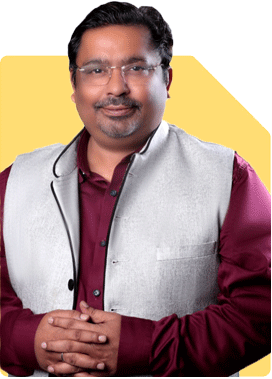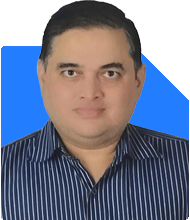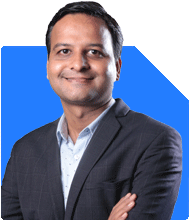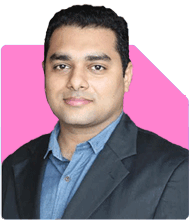Ramalingam Kalirajan |10870 Answers |Ask -Follow
Mutual Funds, Financial Planning Expert - Answered on Sep 22, 2024
He has an MBA in finance from the University of Madras and is a certified financial planner.
He is the director and chief financial planner at Holistic Investment, a Chennai-based firm that offers financial planning and wealth management advice.... more

I am 49 years old and doing MF since 2009 staring with small amount 2000/- pm. Last year i shuffle the portfolio last year. I have following investment in mutual fund 1. parag parik Flexi cap fund - reg gr 5000/- 2. Canara robeco bluechief equity fund gr 5000/- 3. Invesco india infra structure fund 5000/- 4. Quant small cap fund 5000/- I want to create corpus of 2 cr in next 10 years Currently my portfolio value is around 31 L.
Current Assessment of Your Portfolio
Parag Parikh Flexi Cap Fund: A Flexi Cap fund offers flexibility to invest across market caps. This provides diversification but may be subject to market fluctuations. While it has potential for long-term growth, it may not always outperform focused funds.
Canara Robeco Bluechip Equity Fund: Bluechip funds generally invest in large, established companies. These are relatively safer but may not give extraordinary returns compared to mid or small-cap funds.
Invesco India Infrastructure Fund: Infrastructure sector funds can have high growth potential. However, they are cyclical and may face volatility, especially during economic downturns.
Quant Small Cap Fund: Small-cap funds come with higher risk but can deliver significant returns. They are suitable if you have a high-risk appetite, but they require monitoring for volatility.
With a current portfolio value of Rs 31 lakhs, achieving Rs 2 crore in 10 years will require a balanced approach, with a mix of growth-oriented and stable investments.
Analytical Approach
Growth Potential of Your Current Funds
Your current funds cover a range of categories: Flexi Cap, Bluechip, Infrastructure, and Small Cap. While they provide diversification, there are certain risks, especially in sectoral and small-cap investments. Here's an analysis:
Flexi Cap Funds: These funds allow fund managers to shift between large, mid, and small-cap stocks depending on market conditions. This flexibility can enhance returns but may also expose you to greater risks if the market turns volatile. Consider whether you want to retain this flexibility or prefer a more focused investment approach.
Bluechip Funds: These large-cap investments offer stability. Since you have a long-term horizon, Bluechip funds can be a cornerstone of your portfolio, providing steady growth with lower risk. However, they may not deliver returns as high as mid or small-cap funds over the same period.
Sector-Specific Funds: Your investment in infrastructure is cyclical and dependent on the economy and government policies. While it can generate high returns during periods of infrastructure growth, it is more volatile compared to diversified funds.
Small Cap Funds: These funds have higher potential returns but also higher risks. They can be a good choice if you are prepared for short-term volatility.
Evaluating Portfolio Balance and Risk
Your portfolio appears to lean toward higher-risk investments, especially with exposure to small-cap and sectoral funds. While this strategy can lead to higher returns, it may expose you to considerable volatility. Given your age and the importance of preserving capital closer to retirement, you may want to rebalance your portfolio to include more stable investments.
We recommend the following adjustments:
Steps for Portfolio Optimization
Diversification to Manage Risk
Increase Large Cap Exposure: Large-cap funds are more stable and can provide consistent returns over time. Since you have a Bluechip fund, consider increasing your allocation to large-cap investments, which may help balance out the volatility from your small-cap and sectoral funds.
Limit Sectoral Exposure: While the infrastructure sector has growth potential, it's also vulnerable to cyclical downturns. Consider reducing your exposure to sector-specific funds to avoid the risk of underperformance during economic downturns.
Balanced or Hybrid Funds: Hybrid funds, which invest in both equity and debt, can offer a mix of growth and stability. Adding a balanced fund to your portfolio may help reduce volatility while still allowing you to benefit from equity growth.
Reevaluate Small Cap Allocation
Small-cap funds can offer high returns but are also highly volatile. At 49, your risk tolerance may need to shift slightly toward more stable investments. You may want to limit your exposure to small-cap funds to 15-20% of your total portfolio. You could consider moving part of your small-cap allocation into mid-cap or multi-cap funds for a more balanced risk-return profile.
Consistent SIPs and Top-Ups
You are currently investing Rs 20,000 per month through SIPs. This is a good strategy to average out market volatility and stay disciplined with your investments.
Consider Increasing Your SIP Amount: If possible, increase your SIPs gradually every year. Even a small annual increase in your investment can significantly enhance your corpus over the next 10 years.
Top-Up SIPs During Market Corrections: Take advantage of market downturns by making lump sum investments or increasing your SIP during these times. This will allow you to buy more units at lower prices, boosting your overall returns.
Long-Term Focus and Active Monitoring
Given that you are 10 years away from your goal, it's important to maintain a long-term focus while regularly reviewing your portfolio:
Review Performance Annually: Keep track of how your funds are performing. If any of your funds consistently underperform their benchmark or peers, consider switching to better-performing funds after consulting a Certified Financial Planner.
Avoid Frequent Portfolio Changes: While it's essential to monitor performance, avoid the temptation to make frequent changes based on short-term market movements. Stick to your plan unless there is a fundamental reason to alter your investments.
Importance of Actively Managed Funds
You have been investing through a regular plan, which is good as it allows you access to the expertise of a Mutual Fund Distributor (MFD) with Certified Financial Planner (CFP) credentials. Let's understand the benefits of regular funds over direct funds:
Expert Advice: Regular funds give you access to professional advice. Your Certified Financial Planner can help you make informed decisions, especially when market conditions change or when your goals evolve.
Active Management: Actively managed funds tend to outperform passive investments, such as index funds, in volatile markets. Your planner will ensure your portfolio is in line with your risk tolerance and long-term goals.
Avoid Direct Funds
While direct funds may seem attractive due to lower expenses, they lack professional guidance. Managing a portfolio on your own requires significant time and knowledge. Given your 10-year goal, regular funds with the support of a planner are a more efficient way to optimize returns and manage risks.
Disadvantages of Index Funds
Index funds might not suit your goal of accumulating Rs 2 crore in 10 years. They mirror the market and lack the ability to outperform. Actively managed funds, on the other hand, aim to outperform the market. You are already investing in actively managed funds, which have the potential for better returns, especially in a growing economy like India.
Creating an Emergency Fund
Before making any changes to your portfolio, ensure you have a solid emergency fund. This should be 6-12 months of your monthly expenses. It will act as a financial cushion in case of unexpected events, allowing you to stay on course with your investments without liquidating them prematurely.
Estate Planning and Insurance Review
At 49, it's also essential to consider estate planning. Ensure that you have nominated beneficiaries for your investments and that your will is updated.
Additionally, review your insurance coverage:
Health Insurance: Make sure you have adequate health coverage for yourself and your dependents. Medical expenses can erode your savings, especially as you get older.
Life Insurance: Ensure you have sufficient life insurance coverage to protect your family’s financial future. Term insurance is the most cost-effective option for providing a large cover.
Final Insights
Achieving a corpus of Rs 2 crore in 10 years is possible with a well-thought-out strategy. Your current portfolio is diversified, but it leans toward higher-risk investments. By rebalancing your portfolio to include more stable large-cap and hybrid funds, increasing your SIP contributions, and staying focused on long-term growth, you can optimize your chances of meeting your goal.
Regular monitoring and guidance from your Certified Financial Planner will ensure that your portfolio stays aligned with your risk tolerance and financial objectives.
Best Regards,
K. Ramalingam, MBA, CFP,
Chief Financial Planner,
www.holisticinvestment.in
Instagram: https://www.instagram.com/holistic_investment_planners/
You may like to see similar questions and answers below
Omkeshwar Singh | Answer |Ask -Follow
Head, Rank MF - Answered on Apr 11, 2022
Omkeshwar Singh | Answer |Ask -Follow
Head, Rank MF - Answered on Feb 18, 2022
Ramalingam Kalirajan |10870 Answers |Ask -Follow
Mutual Funds, Financial Planning Expert - Answered on May 26, 2024
Milind Vadjikar | Answer |Ask -Follow
Insurance, Stocks, MF, PF Expert - Answered on Sep 22, 2024
Ramalingam Kalirajan |10870 Answers |Ask -Follow
Mutual Funds, Financial Planning Expert - Answered on Sep 22, 2024
Dr Dipankar Dutta |1837 Answers |Ask -Follow
Tech Careers and Skill Development Expert - Answered on Dec 05, 2025
Dr Shyam Jamalabad |108 Answers |Ask -Follow
Dentist - Answered on Dec 05, 2025
Dr Shyam Jamalabad |108 Answers |Ask -Follow
Dentist - Answered on Dec 05, 2025
Dr Shyam Jamalabad |108 Answers |Ask -Follow
Dentist - Answered on Dec 05, 2025
Dr Dipankar Dutta |1837 Answers |Ask -Follow
Tech Careers and Skill Development Expert - Answered on Dec 05, 2025
Ulhas Joshi |280 Answers |Ask -Follow
Mutual Fund Expert - Answered on Dec 05, 2025
Dr Dipankar Dutta |1837 Answers |Ask -Follow
Tech Careers and Skill Development Expert - Answered on Dec 04, 2025
Ravi Mittal |676 Answers |Ask -Follow
Dating, Relationships Expert - Answered on Dec 04, 2025
Anu Krishna |1745 Answers |Ask -Follow
Relationships Expert, Mind Coach - Answered on Dec 04, 2025
Anu Krishna |1745 Answers |Ask -Follow
Relationships Expert, Mind Coach - Answered on Dec 04, 2025




























